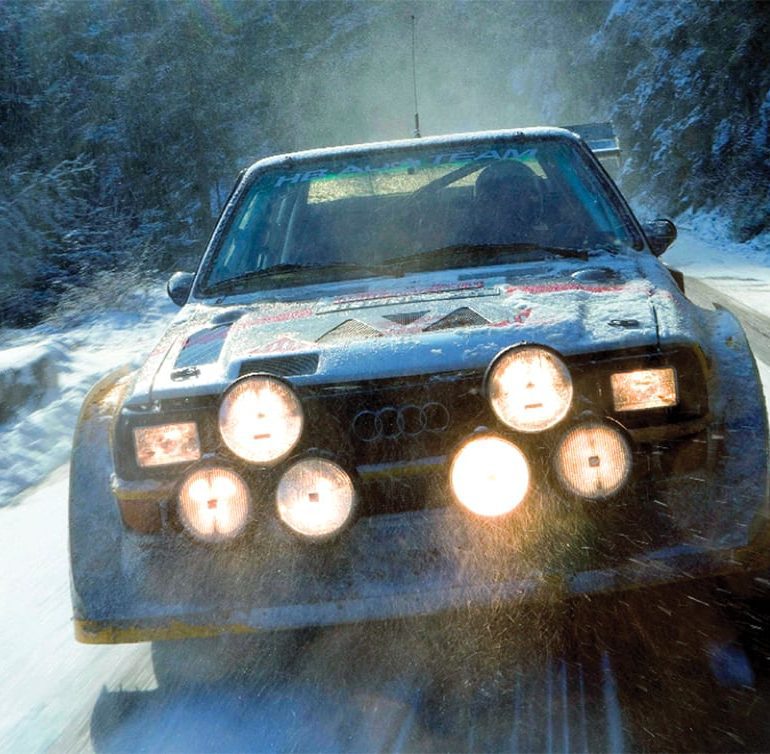In 1980, people laughed when they heard Audi was developing a four-wheel-drive rally car. Hadn’t Ford tried that with their Capri 10 years earlier and drawn a blank? But the detractors stopped laughing when an Audi Quattro won the 1981 Janner Rally in Austria by 20 minutes. And they were positively “po-faced” when Hannu Mikkola started taking a full minute per stage off everyone else on the ice and snow of the year’s Monte Carlo Rally over no fewer than the first 10 stages, before a banal driver error put the car out.
World champion Stig Blomqvist, who would later win his title in a Quattro, said of the Audi’s astounding performance on the ’81 Monte, “I was making ice notes for Bjorn Waldegard at the time and we were listening to the radio announcing Mikkola’s times on the stages. I just couldn’t believe what they were saying: a minute on every stage. That was the start of the whole supercar era.”



